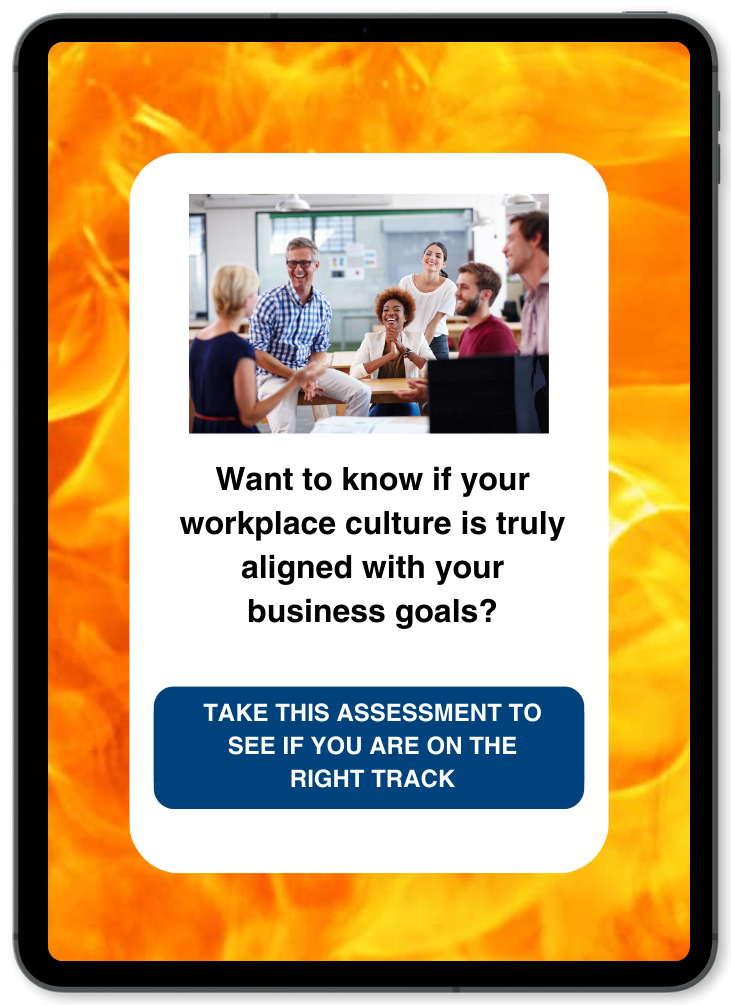
Culture eats strategy for breakfast.
We’ve all heard some variation of that cliché, haven’t we?
Believe it or not, I’m glad there are clichés about workplace culture…because it means that leadership is taking the concept seriously. Culture has entered the lexicon of the corporate report card.
It’s taken some time for industry thought-leaders to identify and quantify corporate culture. It was once a nebulous entity…something managers knew was a factor in the success or failure of their enterprise…but something over which they lacked control.
That’s no longer the case. Experts can not only help leadership identify and quantify the impact of culture on the overall health of an organization, but they can also guide all the stakeholders through a smooth transition from an unhealthy culture to a healthy one.
What’s imperative is not just excavating to reveal your corporate culture…it’s having the will and skills to make adjustments once you figure out what’s missing, and what doesn’t belong.
Understanding your workplace culture: it’s only half the journey.
Researchers at Duke University’s Fuqua School of Business conducted a revealing study in 2015. They surveyed 1900 executives and, not surprisingly, 90% indicated that corporate culture is important, and 78% agreed that a sound corporate culture made their company valuable.
However, only 15% said their own culture was exactly where it needed to be…and 92% said they believed improving their culture would improve the company’s value.
Did executives really know what they needed to improve?
It’s common to mistake workplace engagement for workplace culture when using measurement tools.
Think of employee engagement as the “who, what, when, where, and how” of a job. Engaged employees feel like they have the tools they need to fulfill their role, who to ask for support, where to go for resources, etc.
Workplace culture dives into the “why”. It’s understanding the larger purpose of the organization so that even employees who work in remote locations are all heading towards a common goal. They understand the overarching culture of the company, even if they bring their own diverse skills and values to the table.
So, the cliché about culture, that it’s “created based on the behaviour of the leader”, is only partly true. It’s every bit as much about learning the values and interests of your team members, and then setting them up for success in your shared endeavour: a profitable, sustainable business.
Shifting workplace culture: walking the talk.
So you’ve taken time to explore your existing company culture. Now you have a benchmark – one that all the stakeholders can see and understand. This is the jumping-off spot.
The benchmark might be low, and that’s okay. Well-established companies and upstart “overnight successes” often have some overdone or half-baked policies in their corporate handbook.
Don’t be discouraged. From here it’s time to launch into organizational change with both feet. And this is the most difficult thing you’ll do as a leader.
You won’t be alone in your struggle: according to a study by leadership advisory firm Egon Zehnder, 50% of CEOs said making culture change happen was more difficult than they anticipated. I hear it all the time with my clients.
Change is difficult. It takes humility. It takes perseverance. It takes a willingness to learn from your team even as you’re trying to teach them.
You’ll meet resistance. And you’ll have second thoughts. But it’s imperative that you pursue the changes in your workplace culture that will unleash a level of enthusiasm and ingenuity in your team that you didn’t know existed. You will ignite your team from within…

Making culture change happen: lighting a fire within, not underneath, your team.
If you’ve committed to understanding workplace culture and you’re willing to put in the effort to make the changes necessary, rest assured you don’t have to come up with your own road map.
There are culture assessments that guide you, showing you areas of strength and weakness. And with tools like the six-step IGNITE process you can systematically set about making change happen.
And here’s where your personal contributions kick in. The process will fall apart without commitment on your part. As Richard Barrett, author of Building a Values-Driven Organization points out,
Organizations do not transform. People do.
And this transformation starts with you.
“We must become the change we want to see.” Mahatma Gandhi
Culture is formed, in part, by the behaviours and beliefs of leaders. So, any cultural assessment you conduct will have to include the executive ranks of your organization. For true transformation to happen, leadership must take ownership.
Your challenge as a CEO is threefold…you will:
- Commit to personal change.
- Lose some of your best performers because they won’t adapt to the change.
- Support and manage the personal transformation of your leadership team.
Understanding “soft” skill sets can be difficult for leaders. Typically, you haven’t been trained to assess them…and that’s where an expert is valuable. A neutral third party can be a huge asset to your organization as you travel on this journey of corporate improvement. They can help you set attainable targets, put tools in place to measure progress, and keep your organization on track.
It’s challenging, but it’s worth the effort. If you’d like to learn more about the ways you can IGNITE your team and improve your workplace culture, contact me. There are tools and resources we can use together that will get you started on your journey.
Did you enjoy this article? You might find these helpful, as well:
The Next Evolution in Leadership – Will You Fit In?
How to Reveal the Barriers to Business Success Concealed Within Your Culture
Why Motivating Your Employees Only Gets You Half Way There
This article was originally published in 2018 and has been updated in 2020 just for you.


